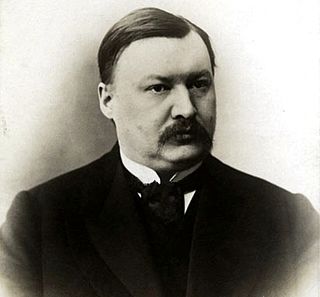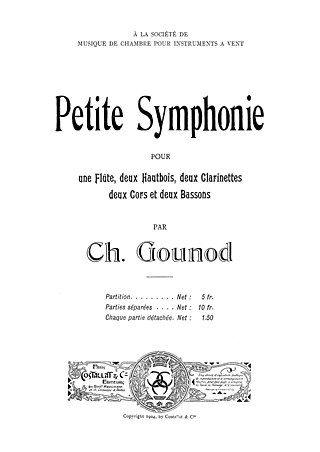
The Symphony No. 1 in F minor, Op. 10, by Dmitri Shostakovich was written in 1924–1925, and first performed in Leningrad by the Leningrad Philharmonic under Nicolai Malko on 12 May 1926. Shostakovich wrote the work as his graduation piece at the Petrograd Conservatory, completing it at the age of 19.
Symphony No. 12 in D minor, Op. 112, subtitled The Year 1917, was composed by Dmitri Shostakovich in 1961. He dedicated it to the memory of Vladimir Lenin. Although the performance on October 1, 1961, by the Leningrad Philharmonic Orchestra conducted by Yevgeny Mravinsky was billed as the official premiere, the actual first performance took place two hours earlier that same day in Kuybyshev by the Kuybyshev State Philharmonic Orchestra conducted by Abram Stasevich.

The Symphony No. 29 in A major, K. 201/186a, was completed by Wolfgang Amadeus Mozart on 6 April 1774. It is, along with Symphony No. 25, one of his better known early symphonies. Stanley Sadie characterizes it as "a landmark ... personal in tone, indeed perhaps more individual in its combination of an intimate, chamber music style with a still fiery and impulsive manner."

The Violin Concerto in A minor, Op. 82, by Alexander Glazunov is one of his most popular compositions. Written in 1904, the concerto was dedicated to violinist Leopold Auer, who gave the first performance at a Russian Musical Society concert in St. Petersburg on 15 February 1905. The British premiere of the concerto followed just over a year later, under the direction of Sir Henry Wood and with Mischa Elman as soloist.
The Symphony No. 4 in E-flat major, Op. 48, was written by Alexander Glazunov in 1893. The symphony was a departure from Glazunov's three earlier symphonies, which were based on nationalistic Russian tunes and, according to the composer, allowed him to give "personal, free, and subjective impressions of myself."
The Symphony No. 5 in B-flat major, Op. 55, was written by Alexander Glazunov from April to October 1895. Although in this symphony Glazunov returned to his conventional four-movement layout he frequently utilizes thematic transformation.

The String Octet in E-flat major, Op. 20, was written by the 16-year-old Felix Mendelssohn during the fall of 1825 and completed on October 15. Written for four violins, two violas, and two cellos, this work created a new chamber music genre. Conrad Wilson summarizes much of its reception ever since: "Its youthful verve, brilliance and perfection make it one of the miracles of nineteenth-century music." This was one of the first works of Mendelssohn to be very well-received.
John Marsh was an English gentleman, composer, diarist and writer born in Netherseal, Derbyshire, England. A lawyer by training, he is known to have written more than 350 compositions, including at least 39 symphonies. While today known primarily for his music, he also had strong interest in other fields, including astronomy and philosophy, and wrote books about astronomy, music, religion, and geometry.
The Concerto in E flat major for alto saxophone and string orchestra, Op. 109, was written by Alexander Glazunov in 1934. The piece lasts about fourteen minutes and is played without pause. It is deeply rooted in Romanticism, and has entered the standard saxophone repertoire.
Alexander Glazunov composed his Piano Concerto No. 1 in F minor, Opus, 92, in 1911, during his tenure as director of the St. Petersburg Conservatory. The concerto is dedicated to Leopold Godowsky, whom Glazunov had heard on tour in St. Petersburg in 1905.
Alexander Glazunov composed his Symphony No. 3 in D major, Op. 33, in 1890, and it was published by 1892 by the Leipzig firm owned by Mitrofan Belyayev. The symphony is dedicated to Pyotr Ilyich Tchaikovsky and was first performed in St. Petersburg in December 1890 under the baton of Anatoly Lyadov. The symphony is considered a transitional work, with Glazunov largely eschewing the influences of Balakirev, Borodin, and Rimsky-Korsakov inherent in his earlier symphonies for the newer influences of Tchaikovsky and Wagner. Because of this change, the Third has been called the "anti-kuchkist" symphony in Glazunov's output. He would tone down these new influences in his subsequent symphonies as he strove for an eclectic mature style. The Third also shows a greater depth of expression, most evident in the chromatic turns of its third movement, reminiscent of Wagner's opera Tristan und Isolde.

Stenka Razin, Op. 13, is a symphonic poem composed by Alexander Glazunov in 1885. Dedicated to the memory of Alexander Borodin, it is one of the few compositions written by Glazunov on a nationalist subject and is composed in a style reminiscent of Borodin and Pyotr Ilyich Tchaikovsky.
The Symphony No. 7 in F major, Pastoral, Op. 77, was completed by Alexander Glazunov on July 4, 1902. It is dedicated to Mitrofan Belyayev.
The Symphony No. 1 in C minor, Op. 3, by Nikolai Myaskovsky was written in 1908.
Felix Mendelssohn wrote thirteen string symphonies between 1821 and 1823, when he was between 12 and 14 years old.. These symphonies were tributes to Classical symphonies especially by Joseph Haydn, Johann Christian Bach, Carl Philipp Emanuel Bach, and Wolfgang Amadeus Mozart.
The Symphony No. 6 in C minor, Op. 58, was composed by Alexander Glazunov in 1896, and was published two years later. It is dedicated to Felix Blumenfeld.

Commemorative Cantata for the Centenary of the Birth of Pushkin, Op. 65, is a cantata by Alexander Glazunov, composed in 1899 in memory of author Alexander Pushkin. It is also known as Memorial Cantata and Cantata in Memory of Pushkin's 100th Birthday. The work in five movements on lyrics by Konstantin Romanov is scored for solo voices, choir and piano.
String Quartet No. 1 in B-flat major "Maori Quartet", Stiles 1.2.3.3 SQ1 is the first of Alfred Hill's seventeen string quartets. Its composition began before 1892, it was completed after 1896 and premiered only on 18 May 1911 in Sydney.

The Petite Symphonie in B-flat major is a four-movement work by Charles Gounod, first performed in 1885. It is scored for a wind ensemble of nine players.






